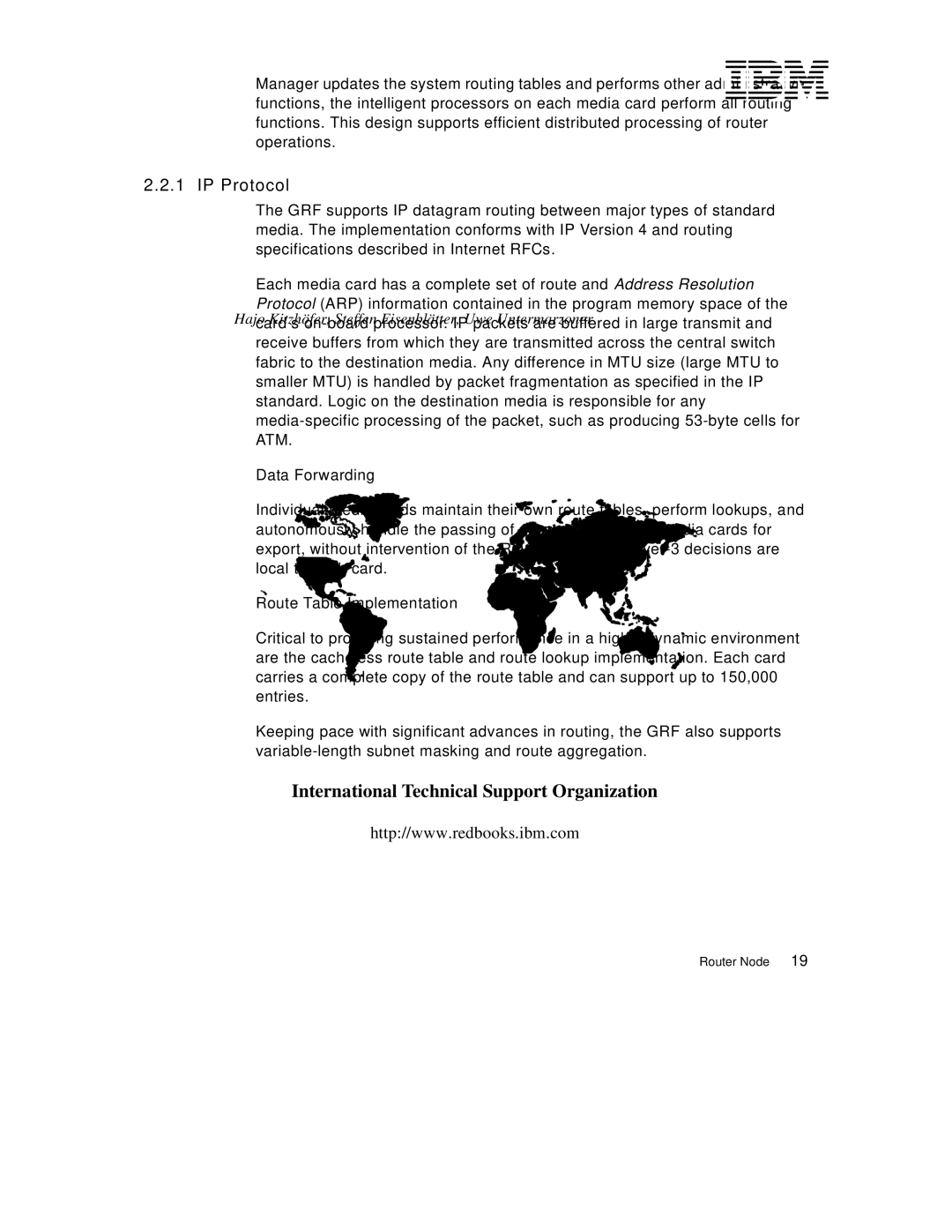Manager updates the system routing tables and performs other administrative functions, the intelligent processors on each media card perform all routing functions. This design supports efficient distributed processing of router operations.
2.2.1 IP Protocol
The GRF supports IP datagram routing between major types of standard media. The implementation conforms with IP Version 4 and routing specifications described in Internet RFCs.
Each media card has a complete set of route and Address Resolution Protocol (ARP) information contained in the program memory space of the card’s
Data Forwarding
Individual media cards maintain their own route tables, perform lookups, and autonomously handle the passing of datagrams to other media cards for export, without intervention of the Router Manager.
Route Table Implementation
Critical to providing sustained performance in a highly dynamic environment are the cacheless route table and route lookup implementation. Each card carries a complete copy of the route table and can support up to 150,000 entries.
Keeping pace with significant advances in routing, the GRF also supports
Router Node 19
